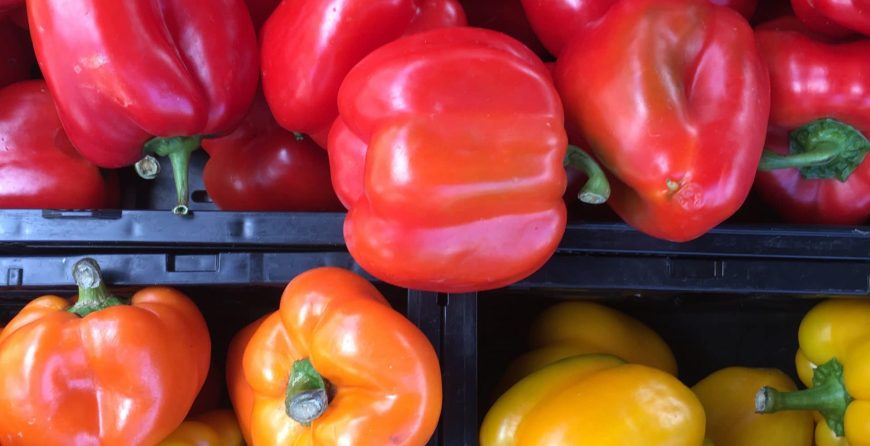Whether you’re adding your own transplants to your organic garden or picked some up at your local garden center, here are some ways to create the perfect pepper crop this summer.
Soil prep
Selecting the right site for your peppers is a key part of the growing process. Find a sunny, well-drained spot in your garden or yard where peppers haven’t grown lately (garden rotation is important, after all).
Your soil should be rich, deep, and loamy before transplanting peppers. If yours could use some TLC, add an inch of organic compost. Conduct a soil test to ensure the pH is correct and that there isn’t too much nitrogen. If your soil has too much nitrogen, your pepper plants will grow too fast which makes them vulnerable to disease.
How to grow large, juicy peppers
- Give them light – Fortunately, there’s no shortage of hot sunlight during Iowa summers. Peppers grow their best in full sun, so the more they get the better off they’ll be.
- Lots of heat – Peppers originate from tropical climates so keep this in mind when growing them. Even though we can’t control mother nature, there are several ways to capitalize on the heat and humidity of Iowa summers. Ensure your soil is warm before transporting your peppers. If you plant them too early when the soil is still wet and cold, it will stunt their growth. You should also consider growing them in a greenhouse if you live in northern or colder parts of central Iowa. This will help you better control the temperature during mild summers.
- Apply organic fertilizer – During the active growing season, you should regularly treat your peppers to organic fertilizer. This will keep them happy and help them become large and crisp. Put a rich slow-release fertilizer or worm castings into the soil of your pepper plants so they have plenty of food. You can also give them a small dose of liquid fertilizer when the seedlings sprout their first true leaves of the season. Then, start to gradually increase it to full strength as they start to grow. Fertilize them every few weeks to yield the large, crisp peppers you long for.
- Keep them hydrated – Peppers grow best in drier soil compared to damp soil, but you should keep a routine watering schedule. Give them a consistent amount of water so they can continue to thrive, otherwise their growth will be stunted and the blossom ends will rot. Consider using a drip irrigation system to keep them happy with the right amount of water and make a huge difference.
- Prune them – Pepper plants are relatively low maintenance compared to other garden staples, but a key factor in encouraging large pepper growth is to pinch off some of the flower buds once they start yielding. Much like tomatoes, peppers benefit from pinching off any extra growth or suckers that develop.
Once you start to follow these tips, you’ll begin to see larger, healthier peppers!


